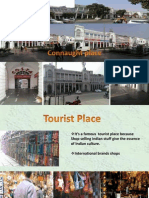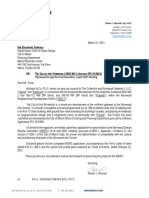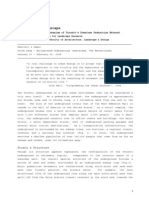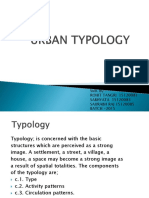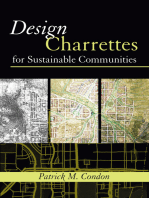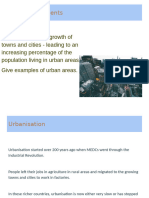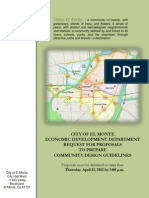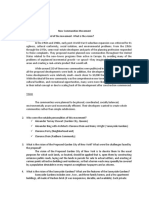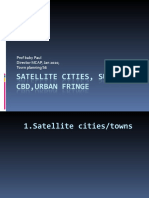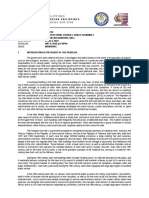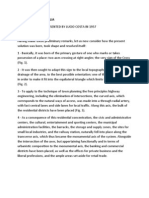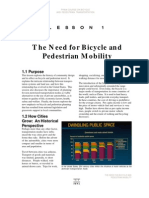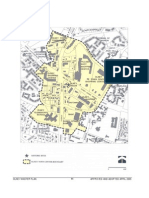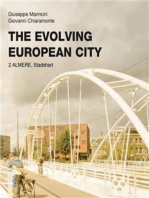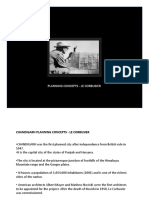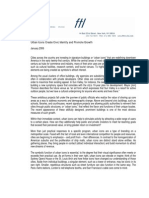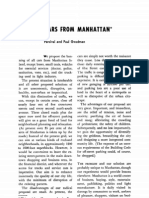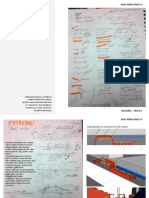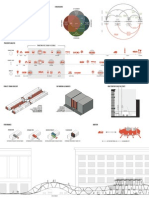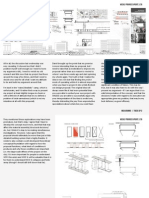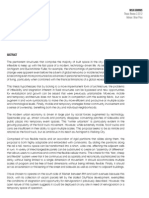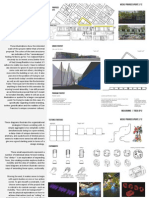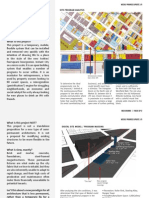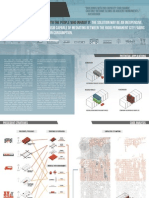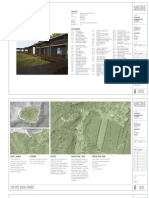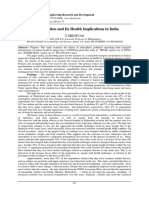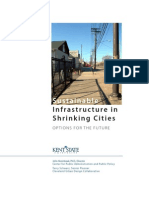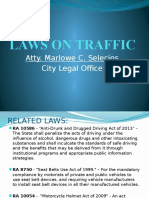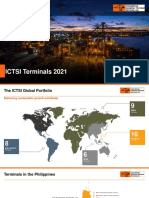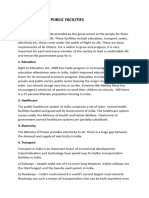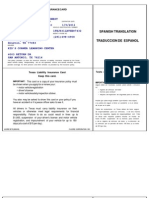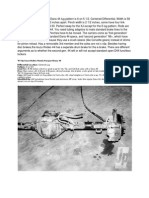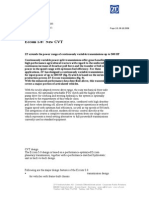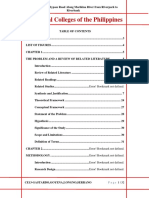The Shape of Suburbia: Misa Grannis - M.Arch Thesis Manual 2011 - Design Experiments
The Shape of Suburbia: Misa Grannis - M.Arch Thesis Manual 2011 - Design Experiments
Uploaded by
Misa GrannisCopyright:
Available Formats
The Shape of Suburbia: Misa Grannis - M.Arch Thesis Manual 2011 - Design Experiments
The Shape of Suburbia: Misa Grannis - M.Arch Thesis Manual 2011 - Design Experiments
Uploaded by
Misa GrannisOriginal Title
Copyright
Available Formats
Share this document
Did you find this document useful?
Is this content inappropriate?
Copyright:
Available Formats
The Shape of Suburbia: Misa Grannis - M.Arch Thesis Manual 2011 - Design Experiments
The Shape of Suburbia: Misa Grannis - M.Arch Thesis Manual 2011 - Design Experiments
Uploaded by
Misa GrannisCopyright:
Available Formats
The Shape of Suburbia
[Thinking of Michael Thompson and Albert Popes theses on the effect of terminal organization (cul-de-sacs) on social politics, the bedroom suburb of Mission Viejo, CA is mapped and analyzed for its distribution of different types of spaces, public and private.]
MISA GRANNIS | M.ARCH THESIS MANUAL 2011 | DESIGN EXPERIMENTS
MISA GRANNIS | M.ARCH THESIS MANUAL 2011 | DESIGN EXPERIMENTS
city hall and public library
MISA GRANNIS | M.ARCH THESIS MANUAL 2011 | DESIGN EXPERIMENTS
Most of Mission Viejo (pop. ~100,000) was planned by a single developer (The Irvine Company) in the late 1970s and was completed in 1980. It was one of the later developments in South Orange County due to its undevelopable (hilly) terrain. It has ranked in the top five of the nations safest city rating for the past decade. The main roads were built in the valleys and the neighborhoods were built on the hills following the topography, resulting in the curvy streets and the occasional empty patch of too-steep hillside. Those blank spaces remain some of the only empty space in the center of the city. (Much of the hilly edge is still empty, but new developments such as Ladera Ranch are springing up in the Saddleback Valley all the time.) Mission Viejos main artery is Marguerite Parkway which runs north to south roughly parallel to the 5 freeway. A manmade lake is located toward the north end of the city, and several gated communites are located in that area (as well as a few further south.) Most of the housing in MV is single-family, though a number of condos and townhouse developments exist. There are very few high-density apartment complexes and no high-rise buildings. Retail pockets are peppered throughout the city but large office buildings are located west around the freeway or in neighboring cities. The citys biggest attraction is the indoor mall known as The Shops at Mission Viejo. Since cities in this region are so geographically small, its common for people to drive a town or two over for entertainment (for example, the massive shopping center and entertainment complex the Irvine Spectrum is a ten minute drive up the freeway and is the most popular spot for nightlife in the area), so The Shops are effectively the only activity or hang-out spot in Mission Viejo proper. Due to the curfew enforced by the city of Irvine, however, the open-air retail complex The Kaleidoscope (located adjacent to The Shops) is a popular late-night hangout for middle-school students.
the large red swaths include two golf courses and a gated manmade lake accessible to members only (only MV residents are eligible for membership). small patches are typically members-only recreation centers.
housing developments (open and gated) and clubs
a large number of parks and fields are connected to schools and therefore not always publicly accessible
most office space is clustered near the freeway, with retail located at major intersections and a commercial center in the south
community buildings (inc. schools) and green spaces
commercial and retail
MISA GRANNIS | M.ARCH THESIS MANUAL 2011 | DESIGN EXPERIMENTS
the most exclusive housing is located furthest from the retail areas, mostly due to the fact that they were built later than the rest of the city and the low mountain range to the east is the only area available for expansion
most zones (insulated areas between major streets) have at least one elementary school embedded in the residential network
housing and commercial/retail
housing and community buildings (inc. schools)
most residential clusters have at least one open space (park or sports field), though many are on school or other private property
(shortest lines are feeders, the only access points from larger streets into a cluster of cul-de-sacs)
housing and green spaces
roads
MISA GRANNIS | M.ARCH THESIS MANUAL 2011 | DESIGN EXPERIMENTS
The logic behind the city planning is revealed through the mapping exercise: A curvilinear grid (following the existing valleys) defines the major residential clusters, and most of these areas surround an elementary school. Most of the city-owned parks are on or adjacent to elementaryschool property. There are only two wilderness parks in the city, but many undeveloped areas (shown as black on the map) too hilly to build upon, though many of those areas are technically owned by the houses at the top of the hill. There are two high schools and one community college in addition to the elementary and middle schools. Most of the commercial space is near the freeway, with small pockets of retail throughout and a few larger clusters (including one shopping mall, several strip malls and a theater/entertainment complex). The official divic city center is located near the geographic center of the city, but aside from the public library there is no real public space in that area. Since most of the land within city limits has already been filled with housing developments, the only opportunities for the creation of new public spaces are either in the black open areas (some of which are adjacent to official park spaces), in converting some of the massive retail parking lots, or in small interstitial moments between existing structures.
Next Steps
It would be interesting to perform this exercise on different citiesa successful urban area and an intentionally planned New Urbanist development, for exampleto compare the relative positioning and adjacencies of various types of program in a place proven to foster a sense of community
MISA GRANNIS | M.ARCH THESIS MANUAL 2011 | DESIGN EXPERIMENTS
You might also like
- (Infrastructure Systems - Delivery and Finance 102) John B. Miller (Auth.) - Case Studies in Infrastructure Delivery-Springer US (2002) PDFDocument285 pages(Infrastructure Systems - Delivery and Finance 102) John B. Miller (Auth.) - Case Studies in Infrastructure Delivery-Springer US (2002) PDFCopyalina Blanca Ine Vera BeltranNo ratings yet
- Sola Morales. Public and Collective SpaceDocument7 pagesSola Morales. Public and Collective SpacebsceciliaNo ratings yet
- Types of Urban SpacesDocument7 pagesTypes of Urban Spacesparul281150% (4)
- Connaught Place, DelhiDocument27 pagesConnaught Place, DelhiChania Bhatia100% (1)
- Urban Decay ArchitectureDocument32 pagesUrban Decay ArchitectureJohn Kristoffer GimpesNo ratings yet
- 7 Urban TypologyDocument39 pages7 Urban Typologytanie96% (27)
- Up-Ayala Land Technohub: Design 741Document7 pagesUp-Ayala Land Technohub: Design 741Jessa Dynn Agraviador VelardeNo ratings yet
- Collective 1Document9 pagesCollective 1the next miamiNo ratings yet
- City at Eye Level ReviewDocument57 pagesCity at Eye Level ReviewSaqib NawazNo ratings yet
- NoMa 2012 Public Realm Design Plan FINALDocument32 pagesNoMa 2012 Public Realm Design Plan FINALnomabidNo ratings yet
- Underground Landscape: The Infrastructure & Urbanism of Toronto's Downtown Pedestrian NetworkDocument20 pagesUnderground Landscape: The Infrastructure & Urbanism of Toronto's Downtown Pedestrian NetworkShah RoozNo ratings yet
- Sub. By:-ROHIT TANGRI 15120081 SABHYATA 15120083 SAURABH RAJ 15120085 BATCH - 2015Document39 pagesSub. By:-ROHIT TANGRI 15120081 SABHYATA 15120083 SAURABH RAJ 15120085 BATCH - 2015Rohit TangriNo ratings yet
- Ten Ways To Improve Your CityDocument22 pagesTen Ways To Improve Your CitykristineNo ratings yet
- Shopping CenterDocument14 pagesShopping Centertintinchan100% (1)
- PPT 2 - UrbanisationDocument21 pagesPPT 2 - UrbanisationlafamiliachopraNo ratings yet
- RFP For Community Design GuidelinesDocument13 pagesRFP For Community Design GuidelinesaialosangelesNo ratings yet
- New Communities MovementDocument4 pagesNew Communities MovementAaron Christian LegaspiNo ratings yet
- Lecture No 24Document14 pagesLecture No 24Tabish IslamNo ratings yet
- Santa MonicaDocument21 pagesSanta MonicaSushmitha KambanNo ratings yet
- Neighborhood Units and Its Conceptualization in Urban ContextDocument21 pagesNeighborhood Units and Its Conceptualization in Urban Contextnanda kathirNo ratings yet
- CHPR Plan FullDocument124 pagesCHPR Plan Fullandrew_wisemanNo ratings yet
- HFT PortfolioDocument24 pagesHFT PortfolioLeandro VignaNo ratings yet
- The New Urbanism: An Alternative To Modern, Automobile-Oriented Planning and DevelopmentDocument4 pagesThe New Urbanism: An Alternative To Modern, Automobile-Oriented Planning and DevelopmentTomasini StefaniaNo ratings yet
- Evolution of PlazaDocument10 pagesEvolution of PlazaShafaq Sulmaz100% (1)
- Safe Cities - DhakshathaDocument31 pagesSafe Cities - DhakshathaAkeel AlawdeenNo ratings yet
- 1.alternate Visions For Cities: - Arcosanti (Paolo Soleri)Document9 pages1.alternate Visions For Cities: - Arcosanti (Paolo Soleri)ish jainNo ratings yet
- Urban DesignDocument23 pagesUrban DesignSmk BossNo ratings yet
- Neighbourhood DesignDocument21 pagesNeighbourhood DesignMageshwarNo ratings yet
- New UrbanismDocument50 pagesNew UrbanismJosielyn ArrezaNo ratings yet
- Neighborhood Unit PerryDocument53 pagesNeighborhood Unit PerryGeley Eys100% (3)
- Satellite TownsDocument81 pagesSatellite Townsakhil rajNo ratings yet
- University of Northern Philippines: IndividualDocument7 pagesUniversity of Northern Philippines: IndividualRoselyn Lazaro TamayoNo ratings yet
- New Urbanism China-HerculesDocument30 pagesNew Urbanism China-HerculesMiroslav MalinovicNo ratings yet
- University of Northern PhilippinesDocument5 pagesUniversity of Northern PhilippinesJanine SorianoNo ratings yet
- CRP3820DesignCritiqueTheIthacaCommons PDFDocument29 pagesCRP3820DesignCritiqueTheIthacaCommons PDFAnonymous IokGyC2soNo ratings yet
- Land Use PlanningDocument53 pagesLand Use PlanningTeenu Therese100% (2)
- Unit 1 - 3Document38 pagesUnit 1 - 3ArDaveAnandNo ratings yet
- The History of BrasiliaDocument14 pagesThe History of BrasiliaagniitNo ratings yet
- Towns: School: I.E.S. Carmen Pantión (Priego de Córdoba) Level: 3 of ESO. OwnerDocument20 pagesTowns: School: I.E.S. Carmen Pantión (Priego de Córdoba) Level: 3 of ESO. OwnertintoreprofeNo ratings yet
- Price Tags 106Document32 pagesPrice Tags 106ProfDan-i-ElNo ratings yet
- Urban Design LecturesDocument11 pagesUrban Design LecturesLance PayawalNo ratings yet
- Carta de AtenasDocument5 pagesCarta de AtenasAndrea LarrauriNo ratings yet
- Public Open Space in BangaloreDocument53 pagesPublic Open Space in BangaloreSindhu BairaviNo ratings yet
- WORLD URBAN DIVERSITY GRP 8Document4 pagesWORLD URBAN DIVERSITY GRP 8Maria Cristina ImportanteNo ratings yet
- Ville Contemporaine & Tel AvivDocument11 pagesVille Contemporaine & Tel AvivDimpuNo ratings yet
- Sabz Bagh11Document23 pagesSabz Bagh11Hassan NadeemNo ratings yet
- What Is Urban and Regional PlanningDocument12 pagesWhat Is Urban and Regional PlanningMayowa Zacchaeus100% (1)
- 3.1. The Neighborhood Unit, Traditional Neighborhood Development and 'Radburn'Document8 pages3.1. The Neighborhood Unit, Traditional Neighborhood Development and 'Radburn'kmmlimarchiNo ratings yet
- The Need For Bicycle and Pedestrian Mobility: 1.1 PurposeDocument18 pagesThe Need For Bicycle and Pedestrian Mobility: 1.1 PurposeMaria TudorNo ratings yet
- Town Center Context: Olney Master Plan Approved and Adopted April 2005 44Document14 pagesTown Center Context: Olney Master Plan Approved and Adopted April 2005 44Planning DocsNo ratings yet
- 0 Final Literature Study ReportDocument15 pages0 Final Literature Study ReportVanya AroraNo ratings yet
- HSP Le CorbusierDocument24 pagesHSP Le CorbusierNadeem ShaNo ratings yet
- Aisha Civic CenterDocument26 pagesAisha Civic CenterOgunranti RasaqNo ratings yet
- U R B A N Urban Icons Create Civic Identity and Promote GrowthDocument4 pagesU R B A N Urban Icons Create Civic Identity and Promote Growthanjana872No ratings yet
- 10 Steps To Good Urban PlanningDocument2 pages10 Steps To Good Urban PlanningMuhd AfiqNo ratings yet
- Week 3 - PWKDocument4 pagesWeek 3 - PWKhalo akufikaNo ratings yet
- Clarence Stein: Town PlanningDocument11 pagesClarence Stein: Town PlanningloveenaNo ratings yet
- Banning Cars From Manhattan - Percival and Paul GoodmanDocument8 pagesBanning Cars From Manhattan - Percival and Paul GoodmanFelipe DamascenoNo ratings yet
- Urban Design Proposals: San Ildefonso, BulacanDocument17 pagesUrban Design Proposals: San Ildefonso, BulacanMika RamirezNo ratings yet
- Grannis AbstractDocument1 pageGrannis AbstractMisa GrannisNo ratings yet
- Grannis Progress5Document4 pagesGrannis Progress5Misa GrannisNo ratings yet
- Misa Grannis - 2/22 Review BoardsDocument4 pagesMisa Grannis - 2/22 Review BoardsMisa GrannisNo ratings yet
- The Calcified City:: Targeting Fast, Cheap & FlexibleDocument4 pagesThe Calcified City:: Targeting Fast, Cheap & FlexibleMisa GrannisNo ratings yet
- Misa Grannis - Abstract 2/22Document1 pageMisa Grannis - Abstract 2/22Misa GrannisNo ratings yet
- Grannis Update3Document5 pagesGrannis Update3Misa GrannisNo ratings yet
- Misa Grannis - Weekly Update 2/12Document3 pagesMisa Grannis - Weekly Update 2/12Misa GrannisNo ratings yet
- Misa Grannis - Weekly Update 2/5Document3 pagesMisa Grannis - Weekly Update 2/5Misa GrannisNo ratings yet
- Misa Grannis - Final ArticleDocument19 pagesMisa Grannis - Final ArticleMisa GrannisNo ratings yet
- Misa Grannis F11 ARL BoardDocument1 pageMisa Grannis F11 ARL BoardMisa GrannisNo ratings yet
- Misa Grannis - 10/11/11 Thesis ResearchDocument4 pagesMisa Grannis - 10/11/11 Thesis ResearchMisa GrannisNo ratings yet
- Belliott+Mgrannis BOOK 1-GeneralDocument13 pagesBelliott+Mgrannis BOOK 1-GeneralMisa GrannisNo ratings yet
- GreenPatch Pothole Repair Material Method StatementDocument7 pagesGreenPatch Pothole Repair Material Method Statementarmagan55No ratings yet
- 28x Bus ScheduleDocument2 pages28x Bus Schedulemaser2004No ratings yet
- Transportation and Its Health Implications in India: T.SrinivasDocument7 pagesTransportation and Its Health Implications in India: T.SrinivasRishabhNo ratings yet
- Lecture No.3 - Bridge-SuperstructureDocument29 pagesLecture No.3 - Bridge-SuperstructureHarold Jackson MtyanaNo ratings yet
- Metro Nashville Transportation Plan 2020Document348 pagesMetro Nashville Transportation Plan 2020FOX 17 NewsNo ratings yet
- Sustainable Infrastructure in Shrinking CitiesDocument35 pagesSustainable Infrastructure in Shrinking CitiesKent State University Cleveland Urban Design Collaborative100% (2)
- Work Programme For Maintenance Daily Roster For Handyman 2013Document2 pagesWork Programme For Maintenance Daily Roster For Handyman 2013RichardoBrandonNo ratings yet
- Easa-147-Uk Approved Basic Training OrganisationsDocument17 pagesEasa-147-Uk Approved Basic Training OrganisationsPavlos TsitswnisNo ratings yet
- Law On Traffic FinalDocument23 pagesLaw On Traffic FinalitssaabNo ratings yet
- IRC 110-2005 Standard Specifications and Code of Practice For Design and Construction of Surface DressingDocument28 pagesIRC 110-2005 Standard Specifications and Code of Practice For Design and Construction of Surface DressingPrasanna S Kulkarni0% (1)
- Driver Qualification ChecklistDocument2 pagesDriver Qualification ChecklistalexaNo ratings yet
- ICTSI Terminal Portfolio 2021 - 051021Document71 pagesICTSI Terminal Portfolio 2021 - 051021Mdjkt IctsiNo ratings yet
- Public Facilities NotesDocument2 pagesPublic Facilities Notessmaansi0709No ratings yet
- Camino - Getting Started Guide PDFDocument2 pagesCamino - Getting Started Guide PDFbaldhorNo ratings yet
- 6.production RatesDocument274 pages6.production RatesSanta StraNo ratings yet
- Simulation of Dynamic Rollover There SH Old For Heavy TrucksDocument9 pagesSimulation of Dynamic Rollover There SH Old For Heavy TrucksDCcover100% (1)
- Moscows Master Plan 2025 by Ludmila TkachenkoDocument44 pagesMoscows Master Plan 2025 by Ludmila TkachenkoDag Alp100% (1)
- Kids Corner Id CardDocument2 pagesKids Corner Id Cardcvaldez123No ratings yet
- Blog - Ipleaders.in-Motor Vehicle Act 1988Document16 pagesBlog - Ipleaders.in-Motor Vehicle Act 1988Tushar kalsotraNo ratings yet
- 93 To Present Isuzu Rodeo Dana 44 Lug Pattern Is 6 On 5 1Document7 pages93 To Present Isuzu Rodeo Dana 44 Lug Pattern Is 6 On 5 1Daniel WildNo ratings yet
- Michigan Strategic Highway Safety PlanDocument100 pagesMichigan Strategic Highway Safety PlanWWMTNo ratings yet
- CPECDocument43 pagesCPECArif ullahNo ratings yet
- 02 Eccom 50 Neues Stufenloses GetriebeDocument3 pages02 Eccom 50 Neues Stufenloses GetriebeFer EmilNo ratings yet
- Lochend Butterfly Planning ReportDocument26 pagesLochend Butterfly Planning ReportGreenerLeithNo ratings yet
- Vehicle Handling and ControlDocument7 pagesVehicle Handling and ControlSakthi RoyalhunterNo ratings yet
- Chapter 4Document70 pagesChapter 4hemysbakery45No ratings yet
- 07108001Document96 pages07108001shivanNo ratings yet
- Bypass Road Along MarikinaDocument32 pagesBypass Road Along MarikinaJoanneCristyDelRosarioLongnoNo ratings yet



